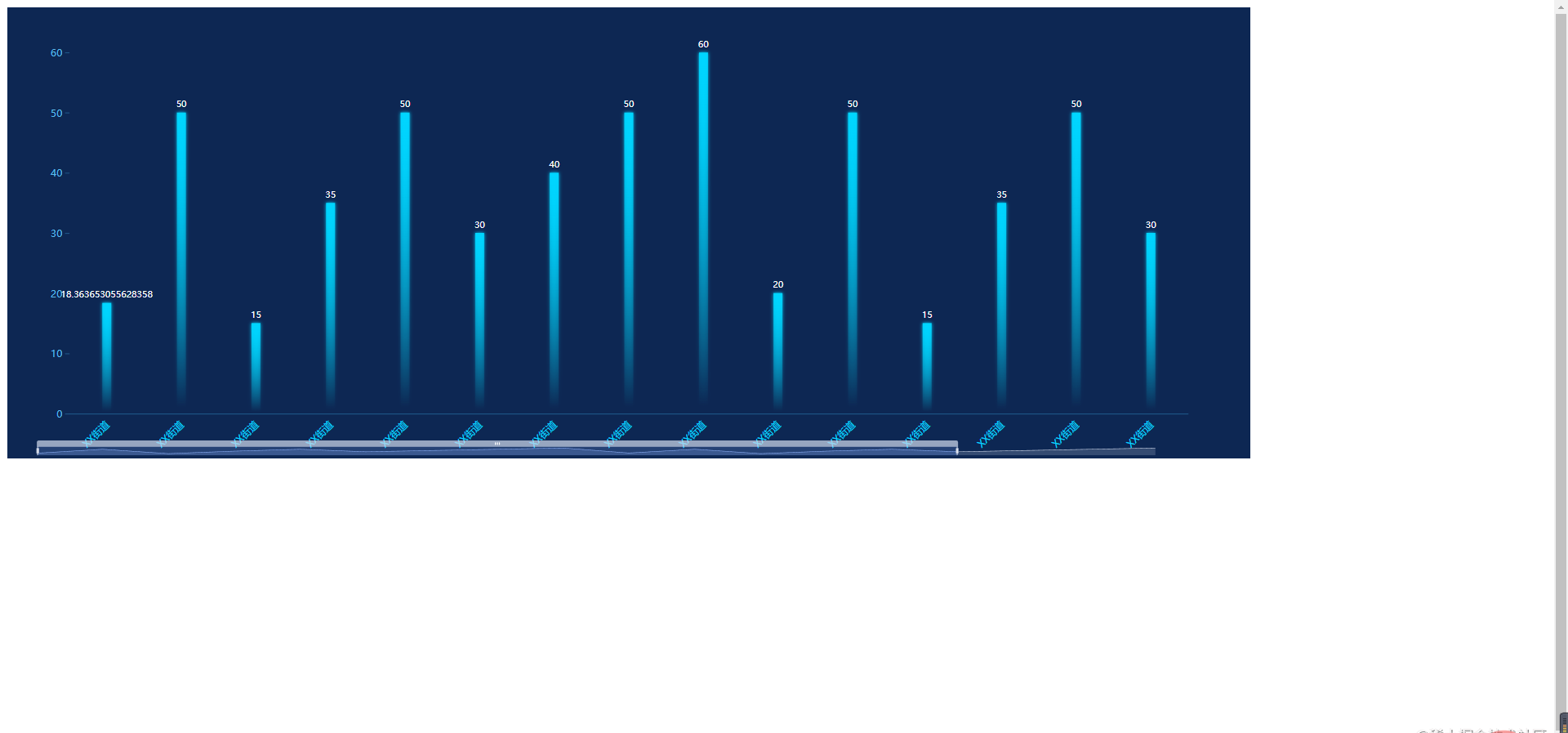一文教你如何正确封装ECharts
本篇文章给大家带来了关于ECharts的相关知识,其中主要跟大家聊一聊怎么封装ECharts,感兴趣的朋友下面一起来看一下吧,希望对大家有帮助。
文章的开头总是很难水的,就不多说了
本文涉及 : TypeScript、Vue3、 echarts
因为 ECharts 的使用场景及其广阔,并且定制化的场景比较多,所以就不封装可以复用的组件了,在我看来每个组件还是需要一个独立的 option ,这里仅封装更好使用的 echats
目录
|--src
|--components // 组件
|--echarts // echats 封装目录
|--echarts-types.ts // 一些类型
|--library.ts // 为 echats 增加的一些功能
|--useECharts.ts // 主函数
|--EChartsComponents
|--a-echarts.vue // 组件使用
|--App.vue代码
library.ts
在 library.ts 中集中引入,挂载 echarts 需要用到的组件和功能
import * as echarts from 'echarts/core'; import { BarChart, LineChart, PieChart, MapChart, PictorialBarChart, RadarChart, ScatterChart } from 'echarts/charts'; import { TitleComponent, TooltipComponent, GridComponent, PolarComponent, AriaComponent, ParallelComponent, LegendComponent, RadarComponent, ToolboxComponent, DataZoomComponent, VisualMapComponent, TimelineComponent, CalendarComponent, GraphicComponent } from 'echarts/components'; echarts.use([ LegendComponent, TitleComponent, TooltipComponent, GridComponent, PolarComponent, AriaComponent, ParallelComponent, BarChart, LineChart, PieChart, MapChart, RadarChart, PictorialBarChart, RadarComponent, ToolboxComponent, DataZoomComponent, VisualMapComponent, TimelineComponent, CalendarComponent, GraphicComponent, ScatterChart ]); export default echarts;
echarts-types.ts
一些需要使用的类型,在这里规范
export enum RenderType {
SVGRenderer = 'SVGRenderer',
CanvasRenderer = 'SVGRenderer'
}
export enum ThemeType {
Light = 'light',
Default = 'default',
}useECharts.ts 主要文件
引入需要使用的功能模块,EChartsOption 类型在使用时容易报红,这里暂时用 any
import { onMounted, onUnmounted, Ref, unref } from "vue";
import echarts from "./library";
// import type { EChartsOption } from 'echarts'
import { SVGRenderer, CanvasRenderer } from 'echarts/renderers'
import { RenderType, ThemeType } from './echarts-types'
export function useECharts(elparams: Ref<HTMLDivElement> | HTMLDivElement, autoUpdateSize: boolean = false, render: RenderType = RenderType.SVGRenderer, theme = ThemeType.Default) {
// 渲染模式
echarts.use(render === RenderType.SVGRenderer ? SVGRenderer : CanvasRenderer)
// echats实例
let echartsInstance: echarts.ECharts | null = null
// 初始化 echats实例
function initCharts() {
const el = unref(elparams)
if (!el) return
echartsInstance = echarts.init(el, theme)
}
// 配置
function setOption(option: any) {
showLoading()
if (!echartsInstance) initCharts()
if (!echartsInstance) return
echartsInstance.setOption(option)
hideLoading()
}
// 获取 echats实例
function getInstance() {
if (!echartsInstance) initCharts()
return echartsInstance
}
// 更新大小
function onResize() {
echartsInstance?.resize()
}
// 监听元素大小变化
function watchEl() {
if (animation) unref(elparams).style.transition = 'width 1s, height 1s'
const resizeObserve = new ResizeObserver(() => onResize())
resizeObserve.observe(unref(elparams))
}
// 显示加载状态
function showLoading() {
if (!echartsInstance) initCharts()
echartsInstance?.showLoading()
}
// 隐藏加载状态
function hideLoading() {
if (!echartsInstance) initCharts()
echartsInstance?.hideLoading()
}
// 生命钩子——组件挂载完成
onMounted(() => {
window.addEventListener('resize', onResize)
if (autoUpdateSize) watchEl()
})
// 生命钩子——页面销毁
onUnmounted(() => {
window.removeEventListener('resize', onResize)
})
return { setOptions, getInstance }
}在组件中的使用
a-echarts.vue 使用,我们现在只需要去找一些 option 就可以实现不同的图表了
这个还不错的网站,有很多示例 PPChart 我们随便拿一个来试试吧,

把配置代码复制到下面,就可以看见效果了
<template>
<div ref="MyEcharts"></div>
</template>
<script setup>
import { onMounted, Ref, ref } from "vue";
import echarts from "../echarts/library";
//获取echarts实例
const MyEcharts = ref<HTMLDivElement | null>(null)
const { setOption, getInstance } = useECharts(MyEcharts as Ref<HTMLDivElement>, false, true)
onMounted(() => {
setOption(option);
const echartsInstance = getInstance()
})
</script>App.vue
<template> <echarts></echarts> </template> <script setup> import echarts from './components/EchartsComponents/a-echarts.vue' </script> <style scoped></style>

完毕! 感觉有帮助的话,求个小赞!!!
推荐学习:《vue.js视频教程》
以上就是一文教你如何正确封装ECharts的详细内容,更多请关注www.sxiaw.com其它相关文章!
